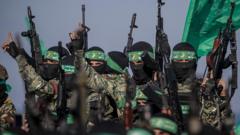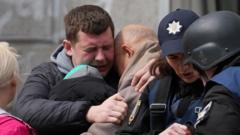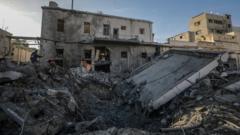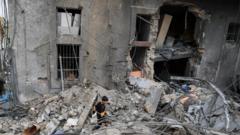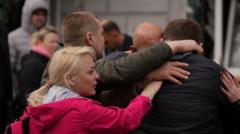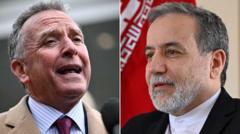After enduring 15 months of captivity under harsh conditions, Israeli hostages such as Gadi Moses and Keith Siegel are finally freed, revealing the traumatic impact of their imprisonment. As families reunite in relief and mourning, the ongoing violence between Israel and Hamas raises critical questions about the future and prospects for peace in the region.
Hope in Despair: The Return of Israeli Hostages Following Hamas Captivity
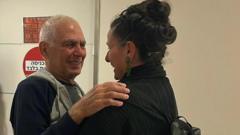
Hope in Despair: The Return of Israeli Hostages Following Hamas Captivity
The recent release of Israeli hostages after prolonged captivity by Hamas sheds light on their harrowing experiences, igniting discussions of resilience, trauma, and the ongoing conflict.
Efrat Machikawa is overwhelmed as she embraces her uncle, Gadi Moses, who was released after being a hostage of Hamas for 15 months. The ordeal, marked by persistent deprivation—as he subsisted on meager rations of bread and olives—raises profound concerns about his physical and psychological well-being, as articulated by Machikawa, "I have no idea how he survived." Reports indicate that Moses was provided with minimal hygiene and human contact, experiencing profound loneliness which, according to his niece, was akin to torture. To combat this, he occupied his mind with mathematics and physical activity within the constraints of his surroundings.
Gadi Moses is one of 18 hostages released in recent negotiations between Israel and Hamas, made possible by a ceasefire agreement that entails the exchange of hostages for Palestinian prisoners. The ceasefire is a response to the violent conflict that escalated in October 2023, resulting in around 1,200 Israeli fatalities and the abduction of 251 individuals. Response measures from Israel have been harsh, with estimates of Palestinian casualties in Gaza exceeding 47,000.
As the operation of releasing hostages unfolds, reports of the conditions faced by these individuals reflect the dire circumstances also experienced by civilians in Gaza. Keith Siegel, another freed hostage, returned home significantly lighter and frail, which further underscores the physical toll of captivity. His niece, Tal Wax, expressed a mix of joy and concern at his return, noting his resilience despite the harrowing experiences he endured.
Upon his release, Gadi Moses faced a chaotic scene in Gaza, creating a moment of terror as he began to think it might be the end of his life. However, once returned to Israel, the weight that had burdened Machikawa lifted as she finally found relief and rest, having feared for her uncle's safety throughout his captivity.
In their reunions, both families express overwhelming joy tempered by deep grief and anxiety for those still held captive. The experience of Yarden Bibas, who returned to his family but mourns the absence of his wife and children, encapsulates this duality. The family's statement, “A quarter of our heart has returned to us,” highlights the emotional complexities faced upon reunion.
Israeli President Isaac Herzog continues to advocate for the return of all hostages while expressing concern for their well-being. Meanwhile, the long-term ramifications of the continuing violence underscore the necessity for a reevaluation of strategies to secure peace and restore the well-being of individuals on both sides of this protracted conflict. The ongoing negotiations, which include plans for further hostage and prisoner releases, will determine whether relief can be achieved amid the ongoing crisis.

